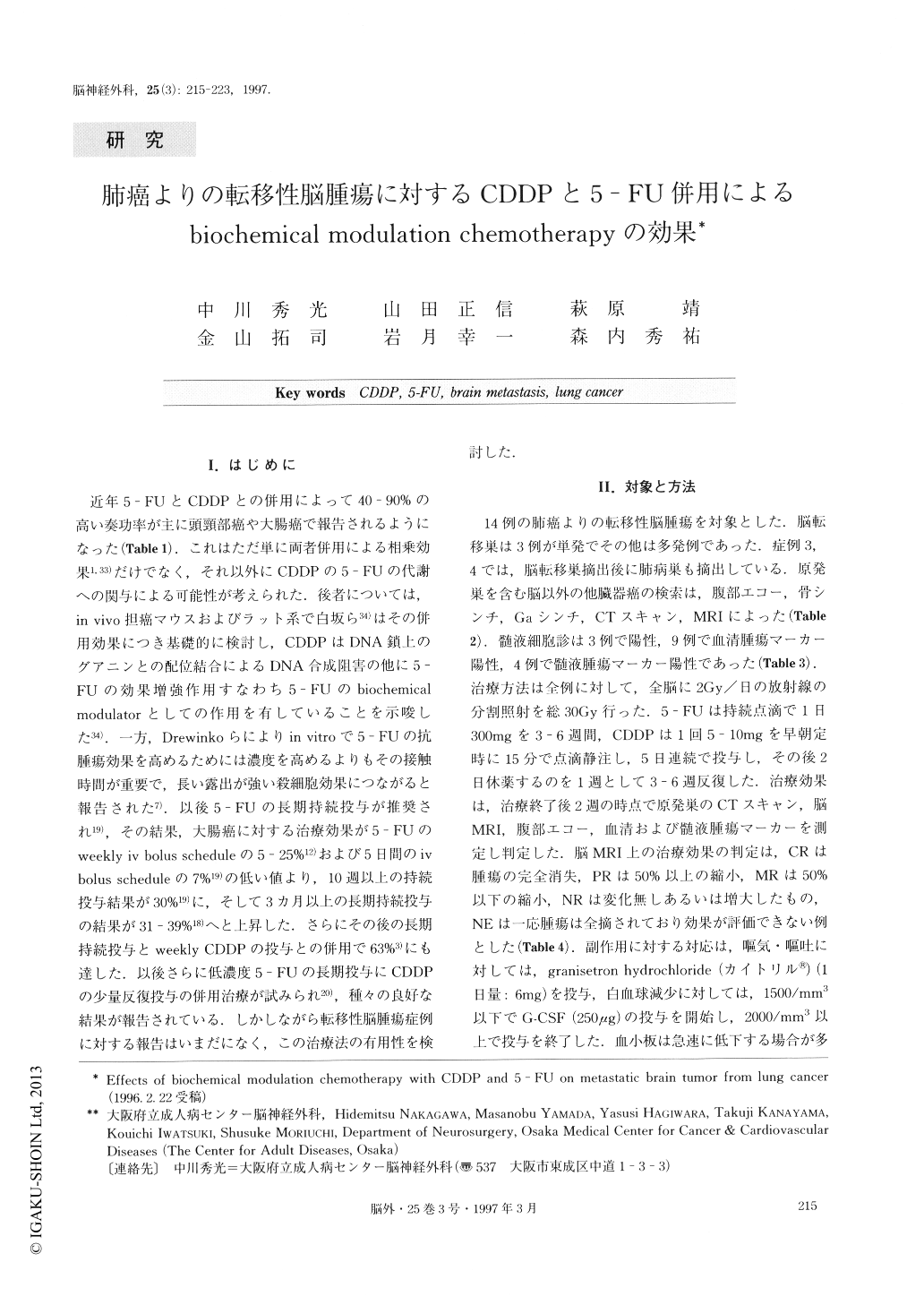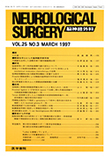Japanese
English
- 有料閲覧
- Abstract 文献概要
- 1ページ目 Look Inside
I.はじめに
近年5—FUとCDDPとの併用によって40-90%の高い奏功率が主に頭頸部癌や大腸癌で報告されるようになった(Table 1).これはただ単に両者併用による相乗効果1,33)だけでなく,それ以外にCDDPの5—FUの代謝への関与による可能性が考えられた.後者については,in vivo担癌マウスおよびラット系で白坂ら34)はその併用効果につき基礎的に検討し,CDDPはDNA鎖上のグアニンとの配位結合によるDNA合成阻害の他に5—FUの効果増強作用すなわち5—FUのbiochemical modulatorとしての作用を有していることを示唆した34).一方,Drewinkoらによりin vitroで5—FUの抗腫瘍効果を高めるためには濃度を高めるよりもその接触時間が重要で,長い露出が強い殺細胞効果につながると報告された7).以後5—FUの長期持続投与が推奨され19),その結果,大腸癌に対する治療効果が5—FUのweekly iv bolus scheduleの5-25%12)および5日間のivbolus scheduleの7%19)の低い値より,10週以上の持続投与結果が30%19)に,そして3カ月以上の長期持続投与の結果が31-39%18)へと上昇した.さらにその後の長期持続投与とweekly CDDPの投与との併用で63%3)にも達した.以後さらに低濃度5-FUの長期投与にCDDPの少量反復投与の併用治療が試みられ20),種々の良好な結果が報告されている.しかしながら転移性脳腫瘍症例に対する報告はいまだになく,この治療法の有用性を検討した.
Fourteen cases of metastatic brain tumors from lung cancer underwent biochemical modulation chemother-apy with daily administration of small doses of CDDP (5 or 10mg/day) and continuous infusion of 5-FU (300mg/day) for three to six weeks. All patients with metastatic brain tumors also underwent a total of 30Gy of whole brain irradiation therapy. Of eleven patients who had metastatic brain tumors when chemotherapy started, complete and partial responses were shown in two patients each (36% response rate). Moreover, only four of twelve patients with extracranial lesions re-sponded (33% response rate). Abnormal levels of tumor marker were improved in only three of 10 evaluable pa-tients (30% response rate). Side effects of this che-motherapy included various WHO grades of bone mar-row suppression as well as nausea and vomiting in 13 of 14 patients. Loss of appetite persisted for two months. Parkinsonism was also noted in three patients as an additional side effect. Mean survival time was 9.4 months, while 4 patients survived longer than one year. Data showing a low response rate, persistant loss of appetite and longer admission period were considered less favorable than those of other chemotherapeutic regimens.

Copyright © 1997, Igaku-Shoin Ltd. All rights reserved.


